 Who'd want to kill a child? On occasion, virtually any parent on the planet, but in this case it's a violent psychopath. 
This poster was painted by the great Enzo Nistri (the brush behind classic promos such as this and this) for the giallo flick Chi l'ha vista morire?, known in English as Who Saw Her Die? It stars former James Bond lead George Lazenby (looking unhealthily thin here because for reasons inexplicable he lost thirty-five pounds for the role) as an American artist in Venice whose young daughter goes missing. He first appeals to the (pro forma ineffectual) police, but the girl turns up floating dead in the Grand Canal.
This brings Lazenby's estranged wife Anita Strindberg to town for the funeral, and soon they're asking questions about a child murder from the previous year, which we the viewers have seen in the opening reel being committed by a woman clad and veiled in black. Lazenby and Strindberg go full sleuth in order to identify and locate this suspected killer, who meanwhile graduates to knocking off adults who might have clues. You may assume co-star and former Bond villain Adolfo Celi has something to do with all this, and he might, but this is a giallo. There's no way to know who's the killer until the final reveal.
The movie's real star may be Venice, where residents once sauntered easily through lanes uncluttered by tour groups and AirBnB renters. You'll see many hidden nooks of the city, beautifully shot by director Aldo Lado and cinematographer Franco Di Giacomo. This type of scenery will come courtesy of AI image generators in the approaching years. After all, why close down St. Mark's Square when you can render it in a computer? Take heart, though—even a computer will never be able to generate Anita Strindberg. Chi l'ha vista morire? premiered in Italy today in 1972.
 You better watch her like a hawk. 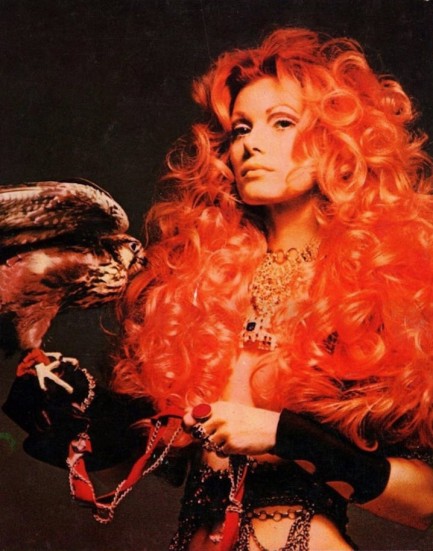
We already shared a couple of nice images of Swiss actress Monica Strebel, but when we saw this great shot we had to bring her back. It was published in the Italian magazine IO. The accompanying text doesn't explain why she has a bird, but it's rather interesting anyway because it claims she wanted to play characters “psychologically suited to her personality, detached from the usual exclusively sexy artificial doll roles, real characters, [that] suffer.” Well, the suffering part came true—she mostly acted in giallo films, where enduring psychological torture is a prerequisite. In this photo, though, she looks like someone who does the torturing. It's from 1969.
 Doing her part to take a bite out of crime. 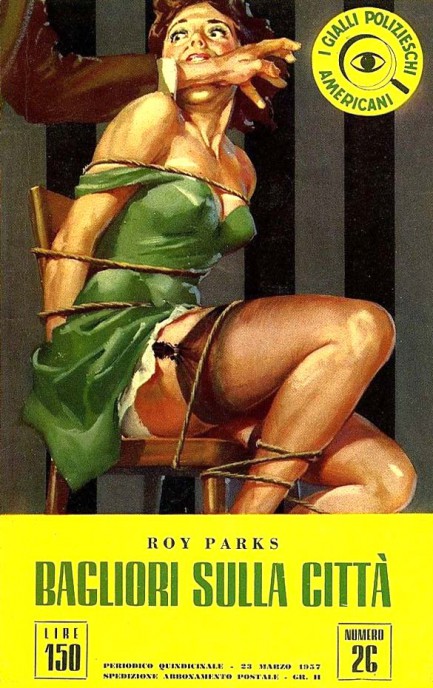
Above is the cover of Bagliori sulla città, written by Roy Parks for S.P.E.R.O.’s series I Gialli Polizieschi Americani, 1957. Parks was actually a writer named Mario Casacci, who also published novels as Bill Coleman, Mario Kasak, Rex Sheridan, and possibly others. He was also a noted screenwriter most famous for inventing, along with Alberto Ciambricco, the figure of Lieutenant Sheridan, who was a staple on Italian television through the 1960s and early 1970s, played by Ubaldo Lay. Casacci also participated on several soundtracks as a lyricist. The art here is from Averardo Ciriello, who we’ve featured before here and here on movie posters.
 My dream is actually to be a singer, so I interrupt this striptease to perform Verdi's aria, “Stride la vampa.” 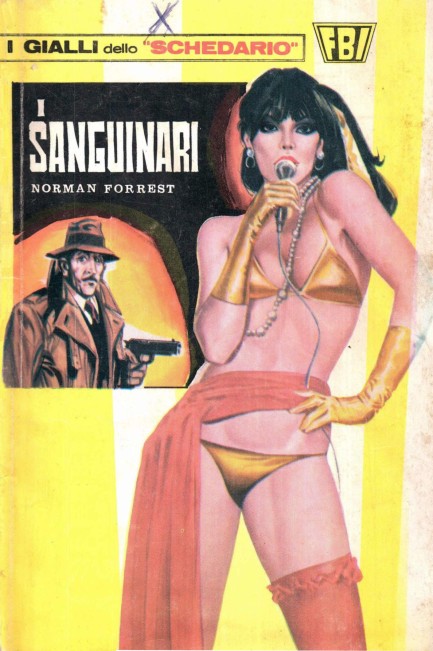
This entry in Editions ERP's I Gialli dello Schedario's FBI series is a late one. It was number 259 and came in 1980, which is surprsing because we didn't realize ERP was still using painted cover art then. This one was the work of Mario Carìa, and Norman Forrest the author was actually—you guessed it—Renato Carocci, the guy who you could be forgiven for thinking wrote every Italian crime novel ever. You can check his output by clicking his keywords below, and you can see a small collection of FBI covers here.
 Anonymous Italian cover artist hits the target. 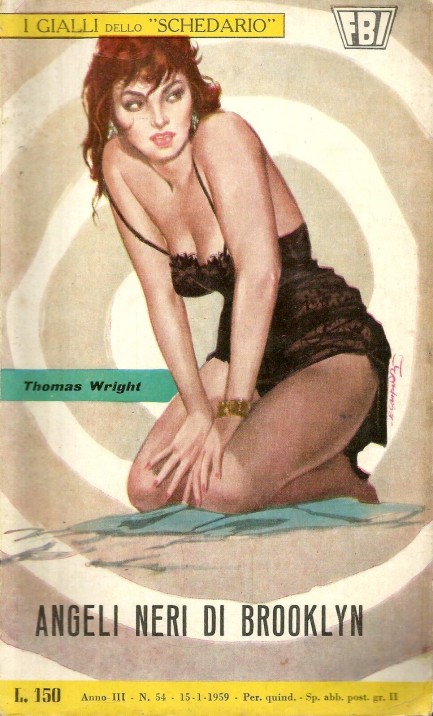
Above: a pretty nice cover with a bullseye motif for Angeli neri di Brooklyn by Thomas Wright, from Editions ERP, entry fifty-four in their I Gialli dello Schedario series, published in 1959. Wright was a pseudonym often used by author Aldo Crudo, who wrote more than four hundred books beginning in 1957. The cover artist is unknown to us. We thought it could be Mario Ferrari. Alternate option, there's a possible artist signature in red ink but we can't read it and it doesn't correspond to any we could find. It might be from the person who owned the book. We've run into book signers before. Anyway, we like the art.
 Haiti gets hit by hurricane Anita.  
These two posters for Al tropico del cancro, aka Tropic of Cancer, were painted by Italian master Renato Casaro, and really demonstrate his artistic range, as they're stylistically different from the other poster he painted for the film. We have plenty of Casaro in the website, so if you want to see more just click his keywords below, or if you're pressed for time, you can see what we think is his best work here and here. He isn't the only person we want to highlight today. The movie stars Anita Strindberg, yet another luminous actress to come out of Sweden, and she plays a wife who travels to Haiti and is soon caught up in tropical sensuality, hallucinogenic drugs, and voodoo. It's unabashed exploitation ranging from the sexual to the cultural, and Strindberg is the main reason it's watchable, as you see below. Al tropico del cancro premiered in Italy today in 1972. 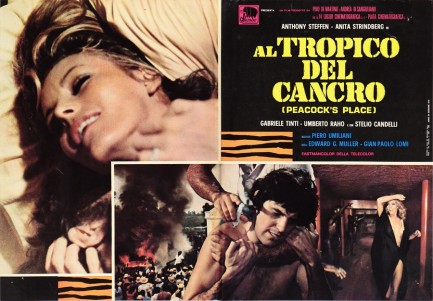 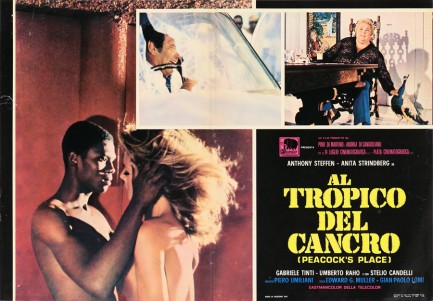 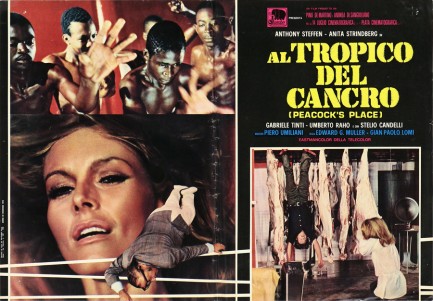 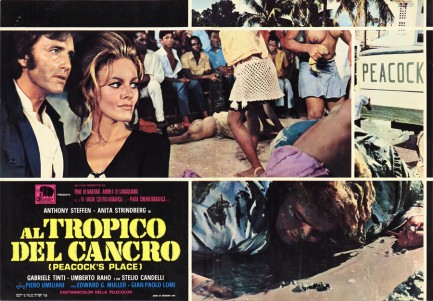 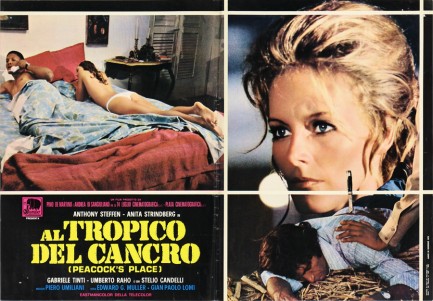  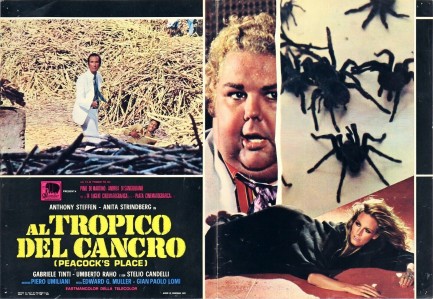 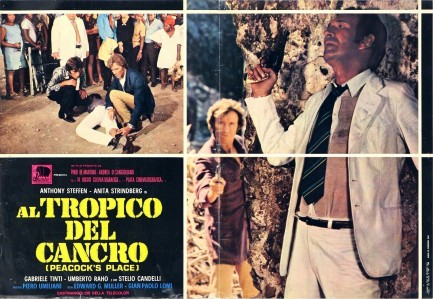  
 Something in Mimsy Farmer's creepy old apartment building definitely doesn't smell right. 
It's been a year, so we're retruring to giallo cinema today with Il profumo della signora in nero, known in English as The Perfume of the Lady in Black. The waifish Mimsy Farmer plays a chemical engineer working in Italy who begins experiencing macabre visions or hallucinations. Are these hauntings due to emerging psychological trauma triggered by the suicide of her mother years earlier? Are they somehow related to her university professor friend Andy, an expert on African religious rituals? Or maybe they're being staged by her pervy neighbor, or dissatisfied boyfriend, or weirdo girlfriend Francesca. An eerie psychic reading set up by her friends certainly doesn't help Farmer's mental stability. Shortly after that fiasco a little girl shows up at her door. Is she a manifestation of Farmer's younger self? What the hell is going on?
Well, it's giallo, so you just can't know. The genre typically involves an intersection of horror and mystery sprinkled with visual non sequiturs, indecipherable clues, and incomprehensible behavior. Mixed in are the usual details: garish lighting, rain and thunder, a disconcerting music box, unexplained disappearances, random cats, bug-eyed strangers, discordant violins, and so forth. In addition, the endings of giallos are usually meant to surprise, and in most cases you'll say to yourself, “Wait—wasn't there an easier way to get all that accomplished?” This one, which has a big reveal in more ways than one, brings up that question. But don't think about it too deeply. It's giallo. We can't say this example is good, but we will say Mimsy Farmer is extremely appealing. You might even call her... appetizing. You'll see what we mean if you watch the film. Il profumo della signora in nero premiered in Italy today in 1974
 With warmth and tender loving care you can grow anything.  
Above are two photos of actress Monica Strebel, who was born in Switzerland but mostly appeared in Italian films. She also, like many actresses of her era, appeared in photo novels and posed nude in magazines, such as the French publication Io, which is where the above shots originated in 1969. Several of Strebel's films had amusingly unwieldy titles, among them 1970's La lunga notte dei disertori - I 7 di Marsa Matruh, aka Operation Over Run, and the 1971 giallo La bestia uccide a sangue freddo, aka Cold Blooded Beast. Perhaps her most notable role was in 1972's Racconti proibiti... di niente vestiti, aka Master of Love. We have a promo shot from it below. Strebel plays Death in the form of a naked woman, and she and star Rossano Brazzi run away together across an open field. They don't make 'em like that anymore. *smack* *smooch* You're so beautiful. I'll follow you anywhere. What's your name again? Did you say Lady Death? That's weird but whatever... *nuzzle* *smooch*
 In giallo it's not the final destination that matters. It's the endless journey in circles. 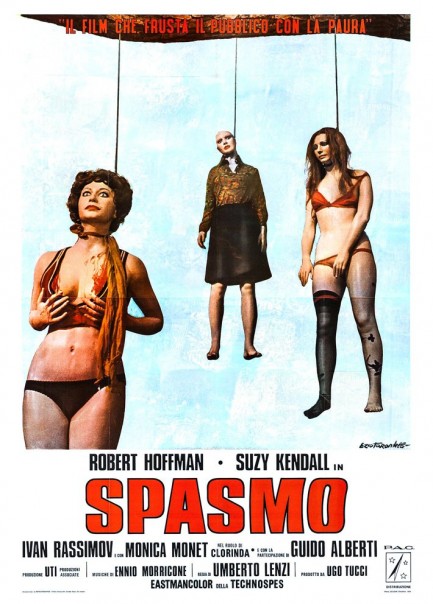 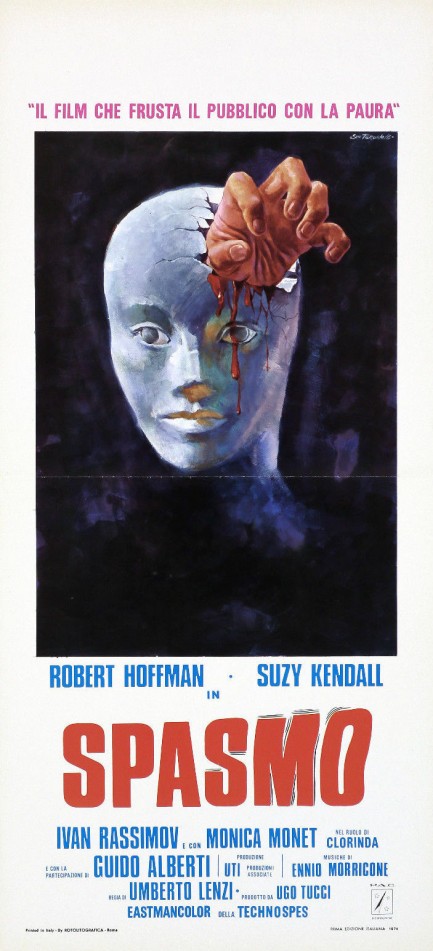 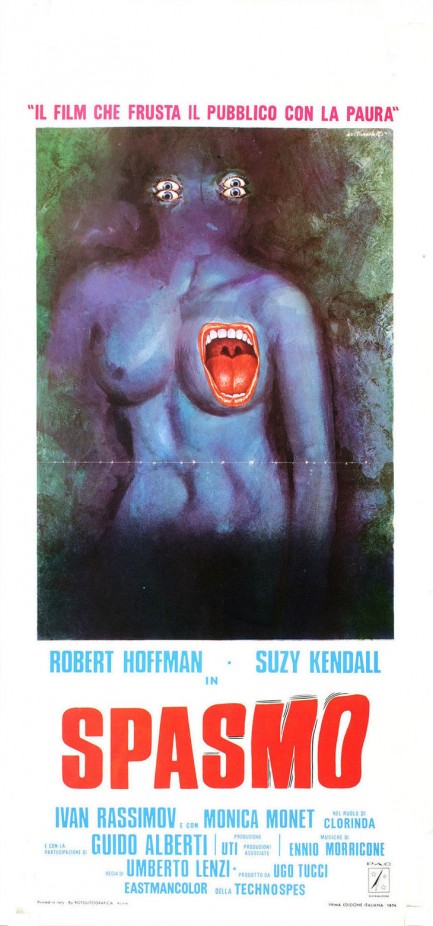
Spasmo is what you used to call your little brother, but amazingly it's also the name of an Italian giallo flick, and like other giallos, this one comes with sly looks, loaded dialogue, appearing mannequins, disappearing bodies, creepy bit players, coincidences that aren't really coincidences, and baffling extraneous events. The plot here here is set into motion when Robert Hoffman shoots an intruder. The body disappears and he spends the rest of the film trying to figure out what happened. Which is impossible, of course, because in giallo the plots are often nonsensical and the characters behave irrationally in ways both minor and major. At one point co-star Suzy Kendall, who needed a long soak in a tub after this torturous journey, says, “I don't understand. I don't understand anything!” And that neatly sums up the film. But giallos (or gialli for you purists) aren't usually meant to be understood. They're puzzles with no solutions. Extremely self-conscious and stylish mindfucks. Some are better than others, but for us, everything about this one falls short except the three excellent, creepy promo posters you see above. Spasmo premiered in Italy today in 1974
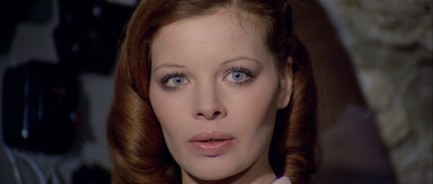 I am a normal... and well adjusted... adult female... human being. I am a normal... and well adjusted... adult female... human being.
 Hide? Heh-heh. What makes you think I have anything to hide? Hide? Heh-heh. What makes you think I have anything to hide?
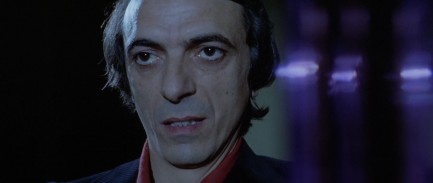 I just pop up and scare the shit out of people when they least expect it. I'm really good at it, too. I'm like the Hendrix of that. I just pop up and scare the shit out of people when they least expect it. I'm really good at it, too. I'm like the Hendrix of that.
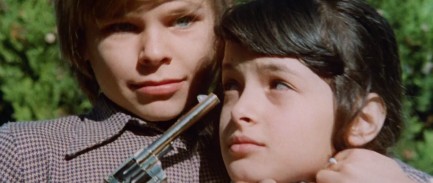 Giuseppe said my plaid leisure suit was ugly and now he must die. Giuseppe said my plaid leisure suit was ugly and now he must die.
 Annabella is molto bella from every angle.    
Every side is Italian actress Annabella Incontrera's good side, as you can in the four shots above. We should all be so lucky. Despite a name that comes off the tongue like poetry, Incontrera sometimes acted as Pam Stevenson, and well, no offense to any Pams or Stevensons out there, but that pseudonym surely had to be the idea of an unimaginative agent or studio head. In the end it was as Incontrera that she made her mark, appearing in several notable Italian giallo and horror films, including La tarantola dal ventre nero, aka Black Belly of the Tarantula, Sette scialli di seta gialla, aka Crimes of the Black Cat, and Perché quelle strane gocce di sangue sul corpo di Jennifer?, aka These Italian Movie Titles are Purely Nuts. She also popped up for a moment in Dean Martin's tongue-in-cheek caper flick The Ambushers as a slaymate. Well, she slays us. These photos are undated but from around 1968.

|
 |

The headlines that mattered yesteryear.
2003—Hope Dies
Film legend Bob Hope dies of pneumonia two months after celebrating his 100th birthday. 1945—Churchill Given the Sack
In spite of admiring Winston Churchill as a great wartime leader, Britons elect
Clement Attlee the nation's new prime minister in a sweeping victory for the Labour Party over the Conservatives. 1952—Evita Peron Dies
Eva Duarte de Peron, aka Evita, wife of the president of the Argentine Republic, dies from cancer at age 33. Evita had brought the working classes into a position of political power never witnessed before, but was hated by the nation's powerful military class. She is lain to rest in Milan, Italy in a secret grave under a nun's name, but is eventually returned to Argentina for reburial beside her husband in 1974. 1943—Mussolini Calls It Quits
Italian dictator Benito Mussolini steps down as head of the armed forces and the government. It soon becomes clear that Il Duce did not relinquish power voluntarily, but was forced to resign after former Fascist colleagues turned against him. He is later installed by Germany as leader of the Italian Social Republic in the north of the country, but is killed by partisans in 1945.
|

|
|

It's easy. We have an uploader that makes it a snap. Use it to submit your art, text, header, and subhead. Your post can be funny, serious, or anything in between, as long as it's vintage pulp. You'll get a byline and experience the fleeting pride of free authorship. We'll edit your post for typos, but the rest is up to you. Click here to give us your best shot.

|
|








































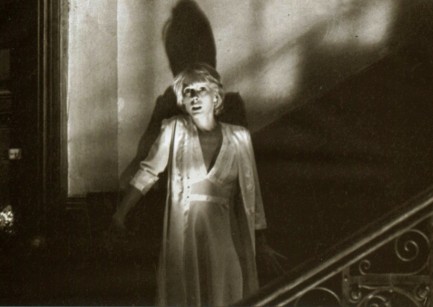


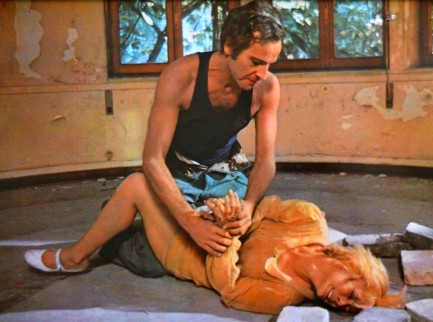
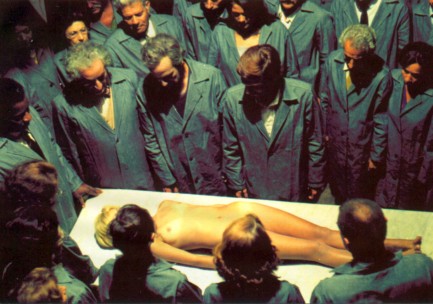
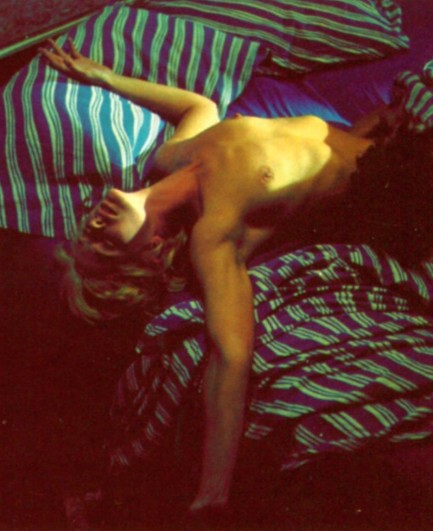
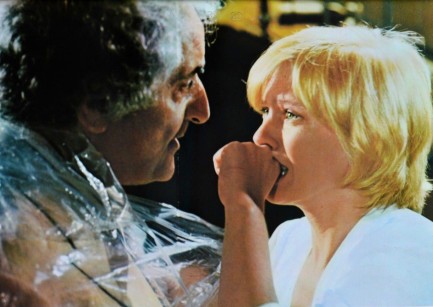
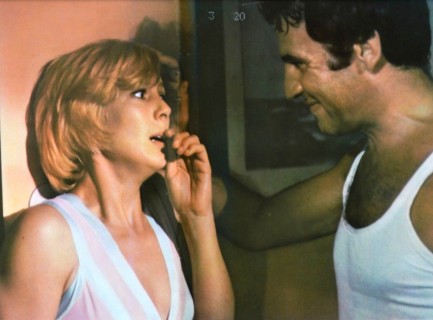
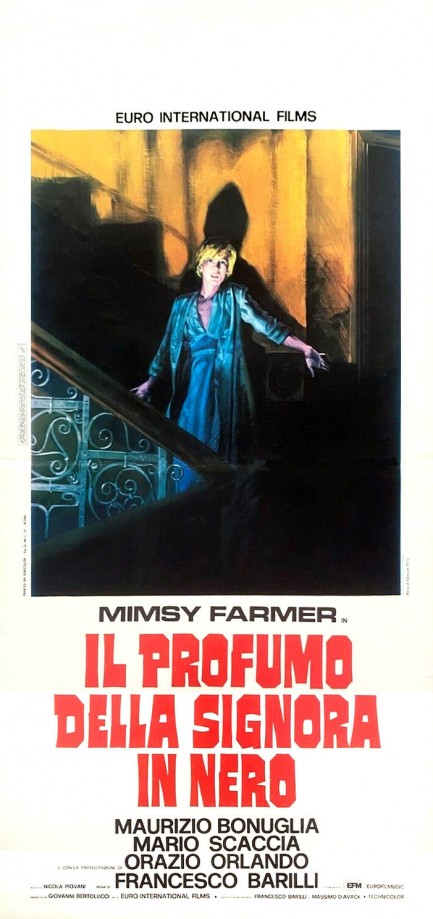








 I am a normal... and well adjusted... adult female... human being.
I am a normal... and well adjusted... adult female... human being. Hide? Heh-heh. What makes you think I have anything to hide?
Hide? Heh-heh. What makes you think I have anything to hide? I just pop up and scare the shit out of people when they least expect it. I'm really good at it, too. I'm like the Hendrix of that.
I just pop up and scare the shit out of people when they least expect it. I'm really good at it, too. I'm like the Hendrix of that. Giuseppe said my plaid leisure suit was ugly and now he must die.
Giuseppe said my plaid leisure suit was ugly and now he must die.









































































